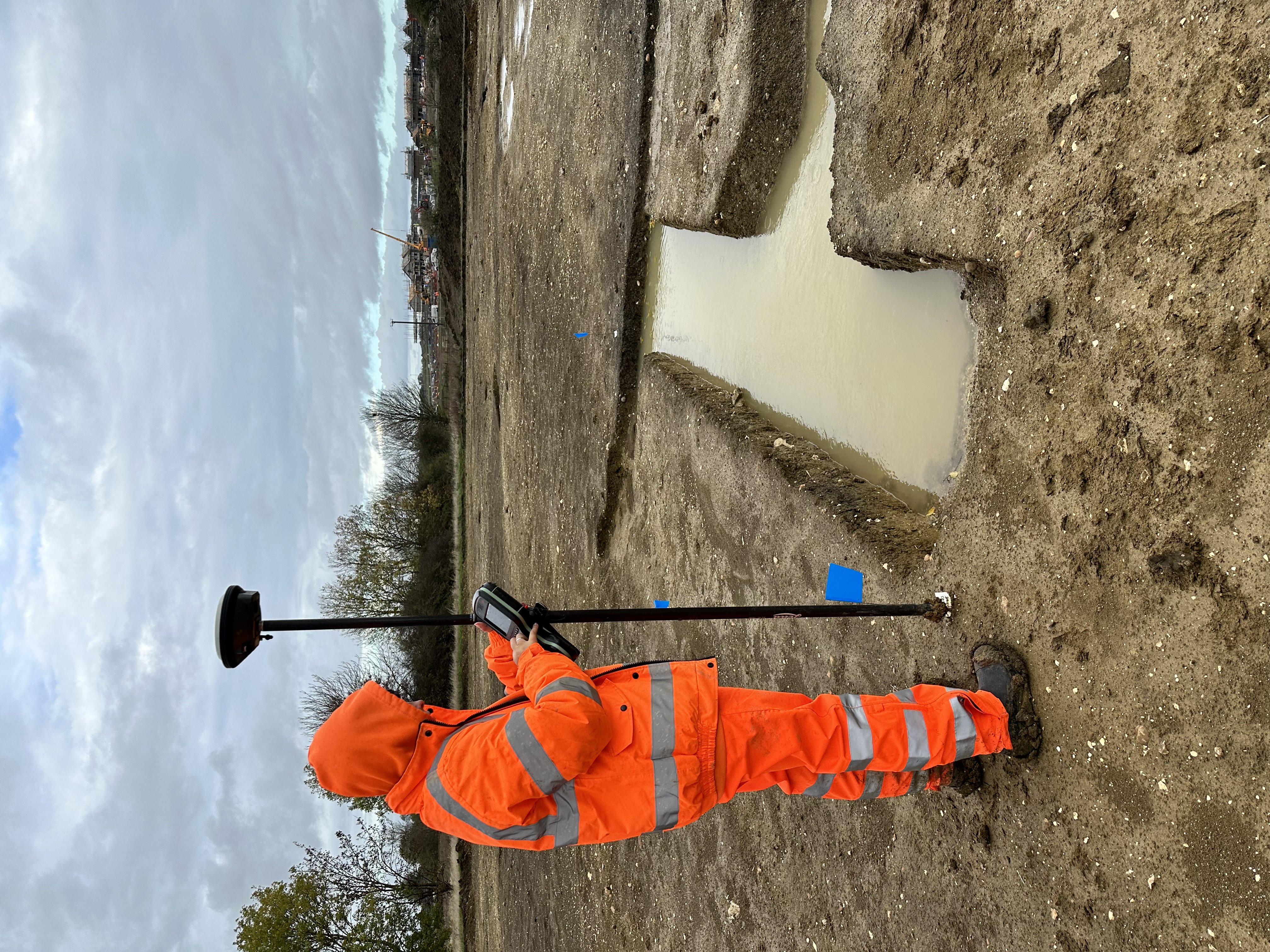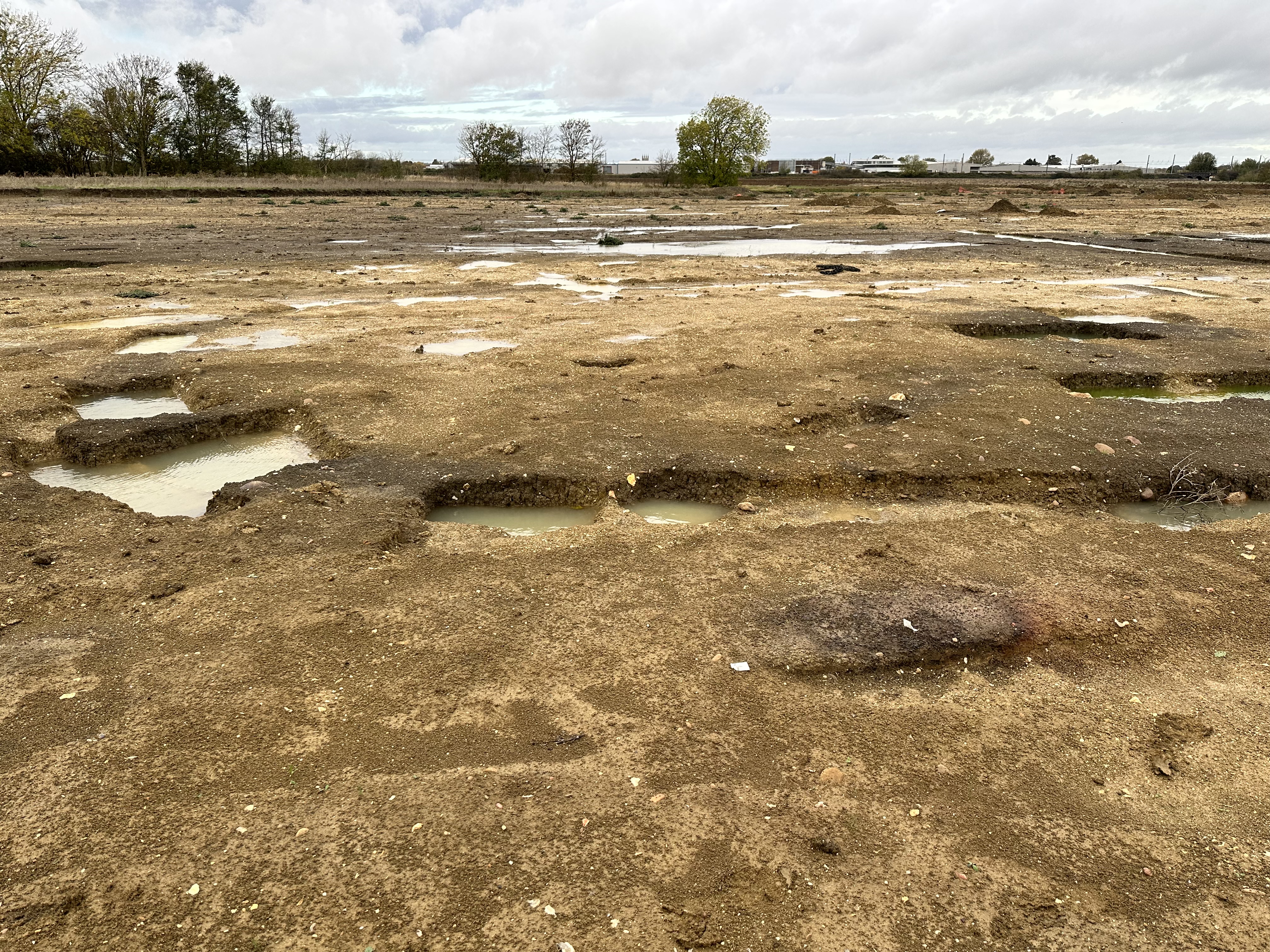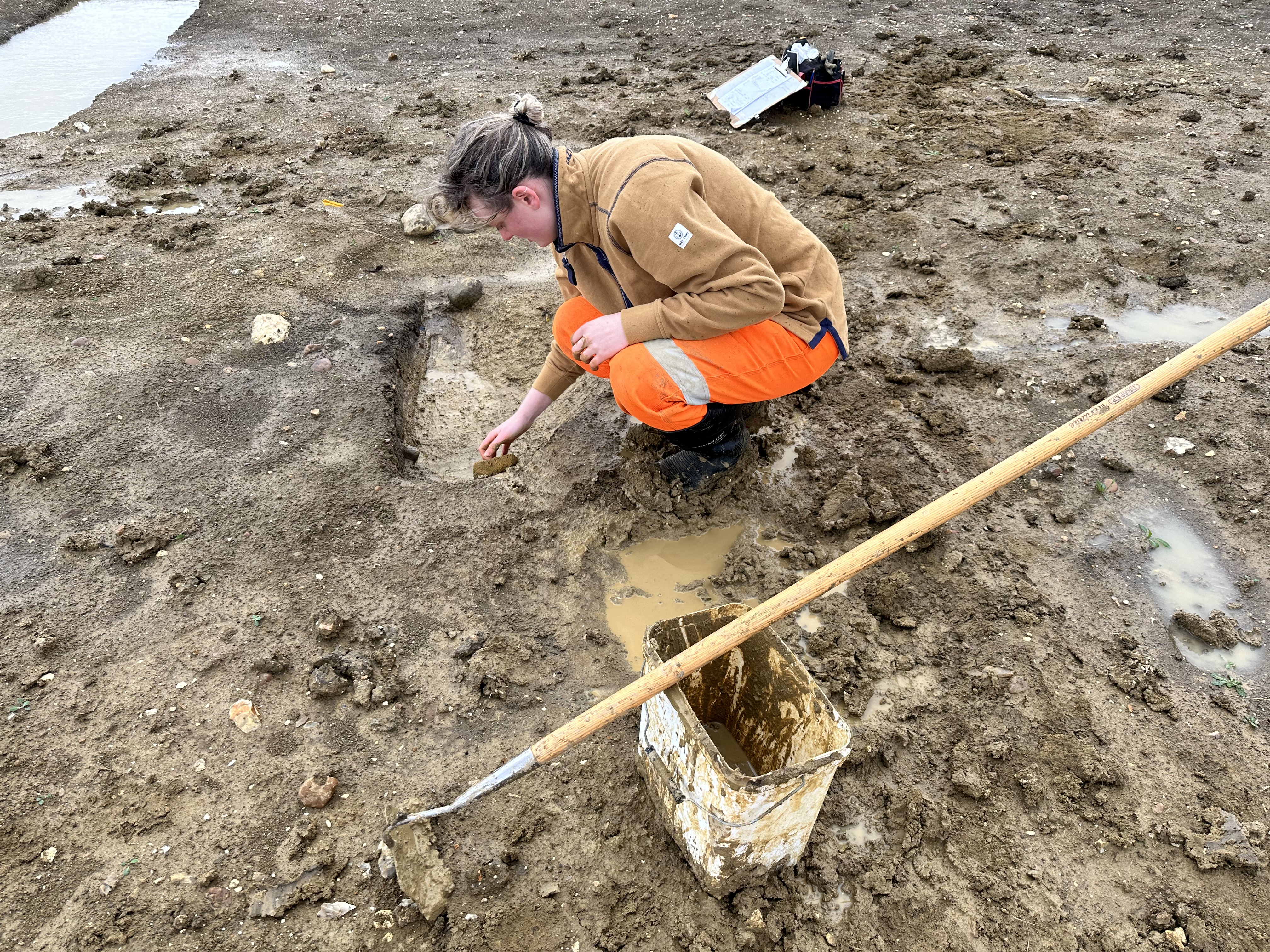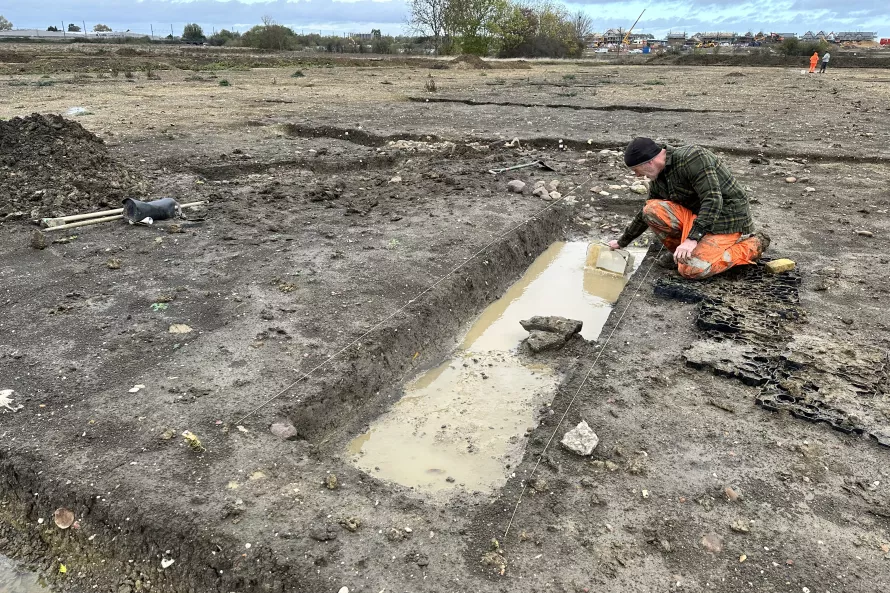The nights are drawing in, the clocks have gone back and wellies and waterproofs are now a permanent fixture in our uniform rosta. It can only mean one thing… winter is coming.
For our graduate trainees on site, this turn in the weather towards colder and wetter days has given them a glimpse into life as an archaeologist through the colder months and the different challenges it brings.

Archaeologist Ellie marking the location of a waterlogged excavated section using GPS.
The lower, harsh autumnal sun can make features difficult to see, meaning that we need to clean features carefully to see where to excavate. This can be especially tricky when the soil filling a feature can look very similar (we call this type of fill “redeposited natural”), which we are finding a lot on site at Wintringham. Luckily, we do have some tricks up our sleeves to work out what is fill and what is the natural soil - finding artefacts being the primary one! Soil colour is also a key indicator – even with redeposited natural there is usually a slightly muddied colour to it that isn’t as clean as undisturbed natural soil. This likely means that the soil has mixed with the environment around it before finding its way into the feature, either through natural processes or through human intervention.
Another challenge is trying to keep features clear and clean for recording despite the wet weather. Looking out over the site in the mornings, you can see a flock of archaeologists (what is a suitable collective noun for archaeologists – a trowel? A spoil?) across the field, bailing water from their features from the nights rain. Digging in wet and cold conditions requires different skills and ways of working, and is an adjustment for those who joined us in the spring and summer. Should I take my photo now in case it rains soon? Can I get a wheelbarrow to my feature without getting stuck or should I dump the soil next to it?

The rainy Autumn weather makes it difficult to use wheelbarrows across the muddy, saturated ground.
Wintringham sits within the claylands, this means that with heavy rain the ground conditions can get particularly claggy and saturated. As a result, the bottom of archaeological features can become rather soggy, making it a fun exercise in patience to quickly sponge out the water and document its profile.

Graduate Trainee Ashley uses a sponge to clear water from her feature to get it ready to be recorded.
This won’t be an issue for much longer though, as excavations draw to a close for this site until March to make way for construction activity. The team have just one week left to battle with the soggy clay and excavate the remaining archaeological features.
Other posts in this collection
Read our latest posts about the archaeological investigations at Wintringham.

